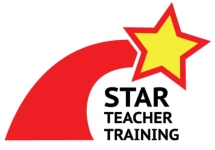How can you help your EFL students with their pronunciation without breaking out the phoneme charts every lesson? One quick and easy activity is EFL Lip Reading. I often use this activity when I need my students to practice their pronunciation. It also works great as a quick vocab or grammar review and I always keep it in my back pocket for emergencies. You can easily and productively use up those unplanned extra minutes at the end of your lesson with this simple EFL activity.
Why EFL Lip Reading Works with Children
An Early Skill: Lip Reading uses an L1 skill that all children developed as infants. At about 6 months old babies are well-oiled language learning machines. It’s around this time that they shift from primarily looking at people’s eyes and start watching their mouths as well.
They recognize that lips provide crucial information for making the same sounds as their parents. They’ll continue watching mouths for months as they also babble and experiment with learning their first words.
This skill is still present in your preschool and primary school EFL students. You’ll find that they are amazingly good at reading lips, even in English and with relatively new words. Even older students can do this activity pretty well.
In my experience, I’ve introduced new vocabulary at the start of a lesson and then had three year-old students reading my lips less than fifteen minutes later.
The skill fades over time with lack of use, but my 10 year old students are still automatically far better at it that I am (even with some practice).
EFL Benefits: Getting your students to practice lip reading is a great way for them to improve their pronunciation while also reviewing vocabulary or even grammar.
You’ll often see students silently mouthing after you to mimic you. They’ll notice and pick up how you form the words with your lips.
This works for the whole word or phrase as well. In Vietnam, where I work, EFL students often struggle with word endings. Using lip reading can get students to focus on how your lips are shaped at the end of words and remind them of final syllables that they often drop or mispronounce.
EFL Lip Reading Activity Basics
Limited List: To do this activity you first need to set a topic or list of vocabulary to limit students’ options. Limiting the potential answers really helps students quickly figure out the answers – even if you just limit by topics such as “fruits” or “jobs.”
Speak Silently: Next, stand at the front of the class in a spot where everyone can clearly see your mouth. I like to say “Look at my mouth. What am I saying?” and then silently mouth the word. Students watch and then call out the word as a class.
Everyone Answers: Your students can either shout out the answer together or raise their hands. Some teachers like to turn it into a competition between teams, but I find that’s not necessary. The kids are always happy to play for a few minutes without winners.
Speak Sentences: For added challenge you can also silently mouth short sentences or phrases. Instead of “apple” you could say “I like apples.” or “eat an apple” Kids get really good with that as well and it’s great for reviewing the lesson’s grammar.
Extra EFL Lip Reading Tips
Lesson Staging: You can put this activity in many different stages of the lesson. First, it works fine as a quick review of the previous lesson’s content. It also goes great right after you’ve presented the target vocabulary or grammar. I’ll often hold a flashcard to my chest, say “What’s this?” and silently mouth the word. Finally, it goes well at the end of your lesson if you want to shore up some of your students’ pronunciation or use the last few extra minutes of your lesson productively.
Settle Students: This activity is great for getting students to quietly focus on you. You’ll feel the energy of the classroom settle down and get concentrated. I like to quickly use this activity for a minute or two to calm an over-excited class down after using an attention routine.
Related Post: Attention Routines – Save Your Voice & Sanity in ESL
Keep It Natural: A lot of teachers are tempted to overemphasize their lip movements when forming the letters. It’s best to try to keep it as natural as possible so you don’t distort what the kids are seeing.
Play Together: Students are also able to play this game with each other once their pronunciation has gotten fairly accurate. Put students in pairs or small groups for game of Speed Speak. They can choose a word from the board or from a deck of cards to silently mouth. This often forces them to be more careful with their word formation.
What other vocabulary & pronunciation activities do you like to do with your students? Please like and share on Facebook.






